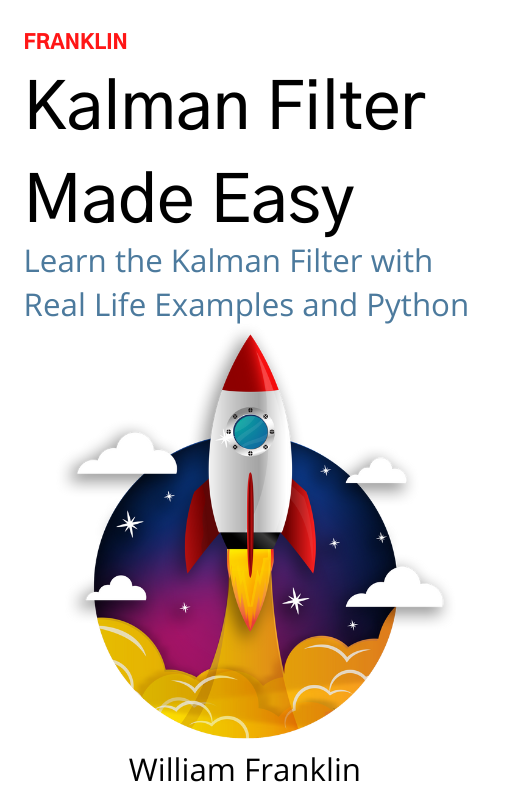Learn the Kalman Filter quickly, easily

This book will guide you through examples step-by-step to do just that!
- Most people never learn the Kalman Filter because they get tired of reading complex mathematical proofs. Why? Because it doesn’t work!
- Kalman Filter Made Easy presents the Kalman Filter framework in small digestable chunks with easy to follow examples!
- Readers learn the best by seeing real life examples with all equations written out accompanied by Python source code. This is the only way readers will understand how the Kalman Filter works!
- Start this journey right now! By clicking the Amazon or Gumroad link below!
Step-by-Step Examples
Fed up with reading about the simple examples that don’t provide the insight you need for your application? This book includes multiple examples: simple ones and complex ones. By going through multiple types of examples, you will see how the fundamentals of the Kalman Filter remain the same.
Simulation and Analysis
How do you know if your Kalman Filter will work? Most blogposts, technical papers, and posts don’t include this type of information. Understanding the basics of setting up a simulation and analyzing the results will give you the ability to iterate over your filter design until you’re confident.
What's in the book?
Chapter 1: What is a Filter?
- Average Filter
- Moving Average Filter
- Exponential Moving Average Filter
- Kalman Filter
Chapter 2: The Kalman Filter Explained Simply
Chapter 3: Image Object Tracking Tutorial with a Kalman Filter – Symbolic Kalman Filter Tutorial
- Step 1: Initialize System State
- Step 2: Reinitialize System State
- Step 3: Predict System State Estimate
- Step 4: Compute the Kalman Gain
- Step 5: Estimate System State and System State Error Covariance Matrix
Chapter 4: Kalman Filter Basic Example
- Designing the System Model
- Executing the Filter
- Changing the System Model
Chapter 5: Kalman Filter – Python Example – Estimating Velocity from Position
- Computing Measurements
- Filtering Measurements
- Testing Kalman Filter
- Plot Kalman Filter Results
- Analyze Kalman Filter Results
Chapter 6: Extended Kalman Filter – Python Example
- Extending Kalman Filter Algorithm
- Extended Kalman Filter – Python Implementation
- Computing Measurements
- Testing Extended Kalman Filter
Chapter 7: Getting Started with Data and Simulation
- Integrating Filter into System
- Use Data from Previous System Operation
- Simulation
Chapter 8: Getting Started with Performance Analysis
- Logging Data
- Defining Requirements
- Validating Requirements
Chapter 9: Sensor Fusion
- What is Sensor Fusion
- Implementation Differences
Appendix A: Kalman Filter Derivation
- Assumptions
- Prediction
- Estimation
- Kalman Gain
* All Python example source code files will be provided with the book
About the Author
William completed his Bachelor and Master of Science in Mechanical Engineering with concentrations in Fluid and Mass Transfer and Manufacturing Technology. William has a broad range of experience from working as a mechanical engineer in the chemical processing, construction, tech, and defense industries. William currently works in the IoT industry designing Kalman Filters for low power sensors.